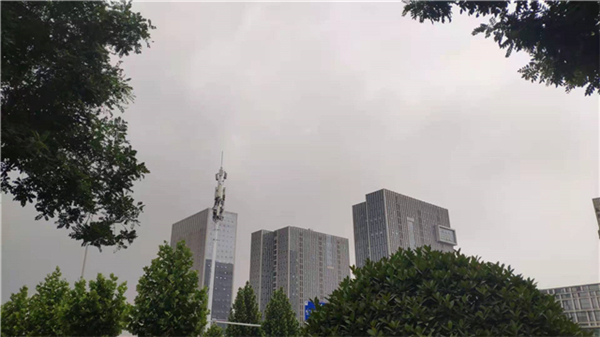前沿资讯!SpringBoot静态资源配置原理详解
2023-04-04 14:25:42来源:实战案例锦集
环境:Springboot2.7.10
默认情况下,Spring Boot从类路径中的/static(或/public或/resources或/META-INF/resources)目录或ServletContext的根目录中提供静态内容。它使用来自Spring MVC的ResourceHttpRequestHandler,因此可以通过添加自己的WebMvcConfigurer并覆盖addResourceHandlers方法来修改该行为。
默认情况下,资源映射在/**上,但是你可以使用spring.mvc.static-path-pattern配置属性进行修改。例如,将所有资源重新定位到/resources/**可以实现如下:
 (资料图片仅供参考)
(资料图片仅供参考)
spring: web: resources: static-locations: - classpath:/META-INF/resources/ - classpath:/resources/ - classpath:/static/ - classpath:/public/
目录结构如下:
默认访问路径:http://localhost:8080/xxx.yy
修改访问路径
spring: mvc: static-path-pattern: /res/**
如上修改后访问路径:http://localhost:8080/res/xxx.yy
注意:如果你使用的是旧版本Springboot,这里的静态资源配置是spring.resources.static-locations
添加静态资源路径spring: web: resources: static-locations: - classpath:/META-INF/resources/ - classpath:/resources/ - classpath:/static/ - classpath:/public/ - file:///D:/images/
上面的:file:///D:/images/
编程方式配置@Configurationpublic class WebConfig implements WebMvcConfigurer { @Override public void addResourceHandlers(ResourceHandlerRegistry registry) { registry.addResourceHandler("/static/**").addResourceLocations("file:///d:/images/") ; registry.addResourceHandler("/h5/**").addResourceLocations("file:///d:/h5/") ; } }上面配置了2个文件系统的资源目录,分别以:/static/**,/h5/**路径进行访问
访问:http://localhost:8080/static/xxx.yy,http://localhost:8080/h5/xxx。
WebJars静态资源除了前面提到的“标准”静态资源位置之外,Webjars内容还有一个特殊情况。任何路径在/webjars/**中的资源都是从jar文件中提供的,前提是它们以webjars格式打包的。
如果你的应用程序打包为jar,请不要使用src/main/webapp目录。尽管这个目录是一个常见的标准,但它只适用于war打包,并且如果你生成一个jar,它会被大多数构建工具默默地忽略。
Spring Boot还支持Spring MVC提供的高级资源处理功能,允许使用缓存破坏静态资源或为Webjars使用版本不可知的URL等用例。
要为Webjars使用版本不可知的url,请添加webjars-locator-core依赖项。然后声明你的webjar。以jQuery为例,添加"/webjars/jQuery/jQuery .min.js"会得到"/webjars/jQuery/x.y.z/jQuery .min.js",其中x.y.z是webjar版本。
为了使用缓存破坏,下面的配置为所有静态资源配置缓存破坏解决方案,有效地在url中添加内容哈希,例如:
spring: web: resources: chain: strategy: content: enabled: true paths: "/**"静态资源访问原理
SpringMVC核心组件配置:
@Configuration(proxyBeanMethods = false)public class DelegatingWebMvcConfiguration extends WebMvcConfigurationSupport { private final WebMvcConfigurerComposite configurers = new WebMvcConfigurerComposite(); // 注入当前环境中所有的WebMvcConfigurer类型的Bean @Autowired(required = false) public void setConfigurers(List configurers) { if (!CollectionUtils.isEmpty(configurers)) { // 添加到上面的WebMvcConfigurerComposite中 this.configurers.addWebMvcConfigurers(configurers); } } @Override protected void addResourceHandlers(ResourceHandlerRegistry registry) { // 调用WebMvcConfigurerComposite#addResourceHandlers方法,该方法内部 // 遍历所有的WebMvcConfigurer分别调用addResourceHandlers方法 this.configurers.addResourceHandlers(registry); }}class WebMvcConfigurerComposite implements WebMvcConfigurer { private final List delegates = new ArrayList<>(); @Override public void addResourceHandlers(ResourceHandlerRegistry registry) { for (WebMvcConfigurer delegate : this.delegates) { delegate.addResourceHandlers(registry); } }} Spring提供的一个WebMvcConfigurer实现
public static class WebMvcAutoConfigurationAdapter implements WebMvcConfigurer { @Override public void addResourceHandlers(ResourceHandlerRegistry registry) { // ... // addResourceHandler注册资源实例 addResourceHandler(registry, "/webjars/**", "classpath:/META-INF/resources/webjars/"); // getStaticPathPattern获取配置文件中spring.mvc.staticPathPattern属性值 addResourceHandler(registry, this.mvcProperties.getStaticPathPattern(), (registration) -> { // getStaticLocations获取配置文件中spring.web.resources.staticLocations属性值 // 该方法调用后就会将资源访问路径与具体资源路径进行关联 registration.addResourceLocations(this.resourceProperties.getStaticLocations()); if (this.servletContext != null) { ServletContextResource resource = new ServletContextResource(this.servletContext, SERVLET_LOCATION); registration.addResourceLocations(resource); } }); } private void addResourceHandler(ResourceHandlerRegistry registry, String pattern, String... locations) { addResourceHandler(registry, pattern, (registration) -> registration.addResourceLocations(locations)); } private void addResourceHandler(ResourceHandlerRegistry registry, String pattern, Consumer customizer) { if (registry.hasMappingForPattern(pattern)) { return; } // 创建并获取资源访问模式的的实例 ResourceHandlerRegistration registration = registry.addResourceHandler(pattern); // 自定义配置 customizer.accept(registration); // 缓存设置 registration.setCachePeriod(getSeconds(this.resourceProperties.getCache().getPeriod())); registration.setCacheControl(this.resourceProperties.getCache().getCachecontrol().toHttpCacheControl()); registration.setUseLastModified(this.resourceProperties.getCache().isUseLastModified()); customizeResourceHandlerRegistration(registration); }} ResourceHandlerRegistry
public class ResourceHandlerRegistry { private final List registrations = new ArrayList<>(); // 为每一种资源创建ResourceHandlerRegistration实例,添加到List集合中 public ResourceHandlerRegistration addResourceHandler(String... pathPatterns) { ResourceHandlerRegistration registration = new ResourceHandlerRegistration(pathPatterns); this.registrations.add(registration); return registration; }} 通过上面的源码我们只看到收集容器中所有WebMvcConfigurer类型的Bean,然后分别调用重写的addResourceHandlers方法接着为每一种资源访问路径/xxx创建对应的ResourceHandlerRegistration实例,并且将这些实例添加到ResourceHandlerRegistry中。
这里有2个疑问:
ResourceHandlerRegistry是如何创建的当访问这些静态资源时对应的HandlerMapping及Adapter又是谁如何与上面的ResourceHandlerRegistration关联的。ResourceHandlerRegistry创建
上面的DelegatingWebMvcConfiguration配置类继承WebMvcConfigurationSupport,该父类中有如下方法:
public class WebMvcConfigurationSupport { // 该Bean是一个HandlerMapping(这是个接口),用来确定当前请求对应的处理器类 @Bean public HandlerMapping resourceHandlerMapping( @Qualifier("mvcContentNegotiationManager") ContentNegotiationManager contentNegotiationManager, @Qualifier("mvcConversionService") FormattingConversionService conversionService, @Qualifier("mvcResourceUrlProvider") ResourceUrlProvider resourceUrlProvider) { PathMatchConfigurer pathConfig = getPathMatchConfigurer(); // 这里创建了资源注册器类 ResourceHandlerRegistry registry = new ResourceHandlerRegistry(this.applicationContext, this.servletContext, contentNegotiationManager, pathConfig.getUrlPathHelper()); // 添加注册静态资源,该访问正好被子类DelegatingWebMvcConfiguration重写了 // 而 在上面源码看到,子类就是遍历了容器中所有的WebMvcConfigurer对应的addResourceHandlers方法 // 到这里你就清楚了静态资源的注册入口,接下来就是这些静态资源对应是如何与HandlerMapping关联的 addResourceHandlers(registry); // 获取HandlerMapping对象 AbstractHandlerMapping handlerMapping = registry.getHandlerMapping(); // ... return handlerMapping; }}通过ResourceHandlerRegistry获取HandlerMapping对象
public class ResourceHandlerRegistry { protected AbstractHandlerMapping getHandlerMapping() { // 如果没有配置静态资源,那么就没有必要注册HandlerMapping了,直接返回null if (this.registrations.isEmpty()) { return null; } Map urlMap = new LinkedHashMap<>(); // 遍历上面注册的所有静态资源对应的ResourceHandlerRegistration for (ResourceHandlerRegistration registration : this.registrations) { // 将ResourceHandlerRegistration对象转换为ResourceHttpRequestHandler对象 ResourceHttpRequestHandler handler = getRequestHandler(registration); for (String pathPattern : registration.getPathPatterns()) { // 以配置的访问路径为key,对应的ResourceHttpRequestHandler为处理句柄 // 当一个请求过来如果匹配了当前的模式,那么就会用对应的ResourceHttpRequestHandler对象进行处理 urlMap.put(pathPattern, handler); } } return new SimpleUrlHandlerMapping(urlMap, this.order); } private ResourceHttpRequestHandler getRequestHandler(ResourceHandlerRegistration registration) { // 获取 ResourceHttpRequestHandler handler = registration.getRequestHandler(); handler.setServletContext(this.servletContext); handler.setApplicationContext(this.applicationContext); try { // 执行初始化 handler.afterPropertiesSet(); } return handler; }}public class ResourceHandlerRegistration { protected ResourceHttpRequestHandler getRequestHandler() { // 创建对象 ResourceHttpRequestHandler handler = new ResourceHttpRequestHandler(); // ... // 设置路径 handler.setLocationValues(this.locationValues); handler.setLocations(this.locationsResources); if (this.cacheControl != null) { handler.setCacheControl(this.cacheControl); } // ... 这里缓存设置 return handler; } } ResourceHttpRequestHandler对应的HandlerAdapter对象
public class HttpRequestHandlerAdapter implements HandlerAdapter { @Override public boolean supports(Object handler) { // ResourceHttpRequestHandler实例HttpRequestHandler子类 return (handler instanceof HttpRequestHandler); } @Override @Nullable public ModelAndView handle(HttpServletRequest request, HttpServletResponse response, Object handler) throws Exception { // 直接调用ResourceHttpRequestHandler#handleRequest方法 ((HttpRequestHandler) handler).handleRequest(request, response); return null; }}
关键词:





 南宁铁路公安“寻包达人”两年收到旅客锦旗116面
南宁铁路公安“寻包达人”两年收到旅客锦旗116面
 福建平潭海警出击 破获一起涉嫌走私冻品案
福建平潭海警出击 破获一起涉嫌走私冻品案
 齐齐哈尔市龙江县警方破获一涉案200余万元的“帮信”案件
齐齐哈尔市龙江县警方破获一涉案200余万元的“帮信”案件
 北京市新增本土确诊病例7例、无症状感染者2例
北京市新增本土确诊病例7例、无症状感染者2例
 浙江东阳警方通报:剧组因拍摄致猫死亡等事实不成立
浙江东阳警方通报:剧组因拍摄致猫死亡等事实不成立
 天津大学留学生志愿者:同天津人民一起守护共同的家园
天津大学留学生志愿者:同天津人民一起守护共同的家园
 永远意气风发!平均年龄62岁的教授合唱团重阳节唱响
永远意气风发!平均年龄62岁的教授合唱团重阳节唱响
 我国首颗太阳探测科学技术试验卫星“羲和号”成功发射
我国首颗太阳探测科学技术试验卫星“羲和号”成功发射
 人社部副部长李忠:加强对中小微企业的服务 营造鼓励创新氛围
人社部副部长李忠:加强对中小微企业的服务 营造鼓励创新氛围
 中国驻俄使馆与新疆维吾尔自治区政府共同举办“新疆是个
中国驻俄使馆与新疆维吾尔自治区政府共同举办“新疆是个











